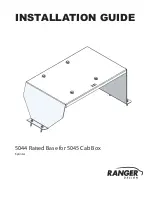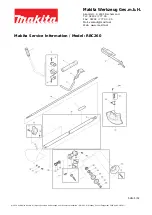
CUSTOM FITTING YOUR P
ACK
SUSPENSION FEA
TURES
4
5
1. SUSPENSION FEATURES
The Tioga, Trekker, Yukon and Jr. Tioga suspensions
features:
THE H-FRAME
is the classic workhorse frame. This frame moves
the waistbelt down, preventing towering loads and providing
greater load transfer to the hips than other frames. The H-Frame
tends to fit people with wider torsos.
Adjustable
BACK
PANEL
slides up
and down to
adjust for different
torso sizes.
BELT STABILIZER STRAPS
on waistbelt help to
transfer and control load.
Adjustable height
FRAME
customizes
your pack.
2. FITTING YOUR PACK
Follow these steps IN SEQUENCE to achieve the best fit
every time you use your pack. Refer to the figure
above to identify pack parts.
Before starting, loosen all load-lifter and belt stabilizer straps.
Figure 2A
Figure 2B
hip bone
bottom two ribs
shoulder blade
belly
button
recommended
position
low
position
A. FIRST weight the pack with at least 25 lb.
(35 lb. is ideal).
B. NEXT put the pack on and tighten the waistbelt.
Make sure you place the waistbelt in the proper
location (Figures 2A & 2B).
It is recommended to wear the belt on hip bones, just under the
rib cage. If you still prefer to wear the belt low, add one to two
inches to your torso length measurement. Figure 2A shows both
the preferred placement of the waistbelt and an example of a
belt worn low. The low position is not recommended. Once
positioned correctly, tighten the belt to prevent it from sliding.
(A good rule of thumb is to have the belt buckle approximately
over your belly button.)
Benefits of wearing the belt high on the waist:
• Proper loading of the skeletal frame, further supported by
the two strongest muscle groups in the body: the
quadriceps & gluteals.
• Blood flow & nerves route across the front of the hips;
wearing the belt too low can restrict blood flow causing
muscle fatigue, nerve pinching and possible numbness.
3-5”
C. Once the waistbelt is in the correct position,
tighten the shoulder straps
. To tighten shoulder straps
pull the webbing at the lower ends of the shoulder strap down
& back. The top of the load lifter strap should be 3-4” inches
above the top of your shoulder
(Figure 2C)
. (Put a little more
load on your shoulders than you want to end up with.) During
this operation the load-lifter straps should be kept loose.
Figure 2C
With the waistbelt positioned correctly and the shoulder straps as
shown below, you have achieved a perfect fit.
If you do not have the correct
shoulder strap position, you will
need to adjust the torso length as
directed in the following section.























